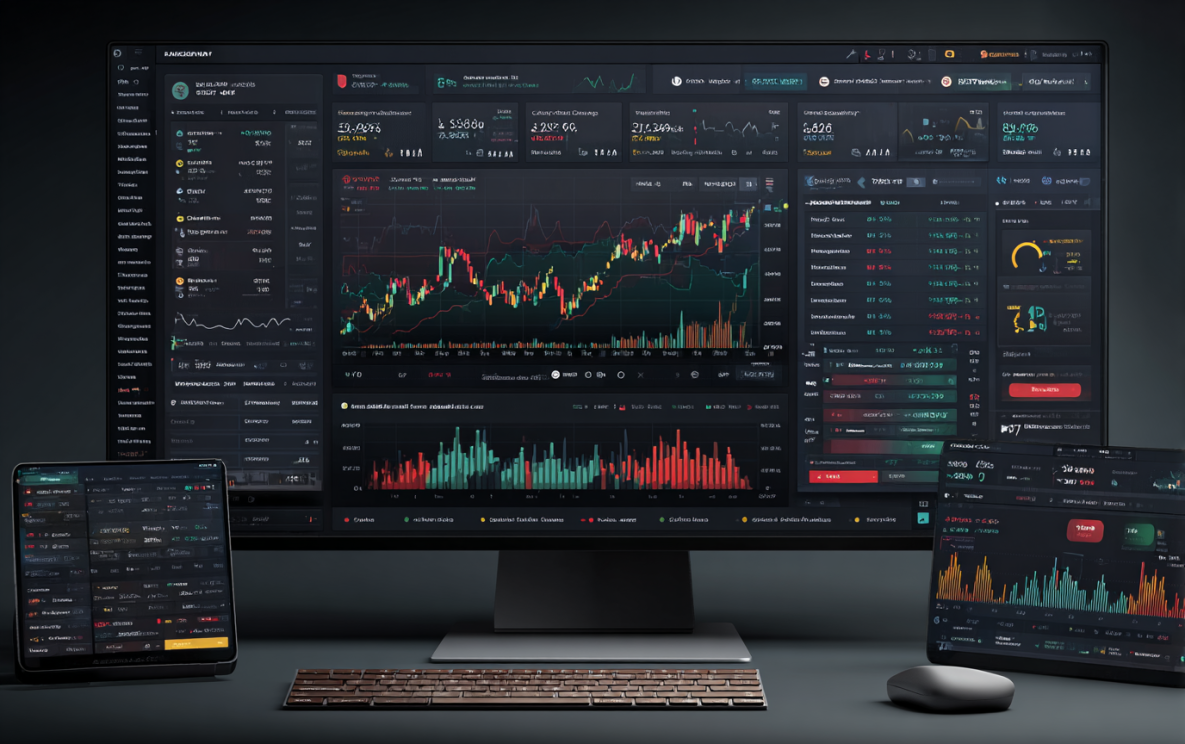Understanding Fees on Crypto Exchanges
What Are Trading Fees?
Trading fees are charges applied by exchanges when you buy, sell, or trade cryptocurrencies. These typically include maker fees (for adding liquidity) and taker fees (for removing liquidity), ranging from 0% to over 1% per transaction. For example, a $100 trade with a 0.1% fee costs just $0.10, while a 0.5% fee would cost $0.50—highlighting the savings potential.
Why Fees Matter
Cost-effective platforms can significantly impact your profitability, especially for day traders or those making frequent transactions. High fees can erode gains, particularly in volatile markets where small price movements are common. Choosing a low-fee platform ensures more of your capital is available for trading or holding.
Key Factors to Identify the Cheapest Crypto Exchanges
Fee Structures and Discounts
The most affordable exchanges often feature tiered fee structures based on trading volume or holding native tokens. For instance, Binance reduces fees to 0.075% for users with high volumes or BNB holdings. Look for platforms offering zero-fee deposits or withdrawals, like Kraken’s USD deposits, to further cut costs.
Supported Cryptocurrencies and Pairs
A wide range of supported coins and trading pairs can influence costs. Platforms like KuCoin, supporting over 700 cryptocurrencies, provide flexibility without hidden fees for obscure tokens. Ensure the platform matches your trading preferences to avoid costly workarounds.
Additional Costs to Consider
Beyond trading fees, watch for withdrawal fees, network fees, and inactivity charges. The most affordable exchanges minimize these, but some, like Coinbase, may charge higher withdrawal fees (e.g., $1-$3 for BTC), impacting overall costs. Always review the full fee schedule.
Top Cheapest Crypto Exchanges in 2025
Kraken: Low Fees with High Security
Kraken stands out with maker fees as low as 0% and taker fees starting at 0.16%, dropping to 0.00% for high-volume traders on Kraken Pro. It offers zero-fee USD deposits and supports major coins like BTC and ETH. Its strong security, with cold storage and audits, adds value, though the interface may feel dated.
Pros:
- Ultra-low fees for high volumes.
- Zero-fee USD deposits.
- Robust security features.
Cons:
- Limited altcoin range.
- Slightly complex for beginners.
Binance: Global Leader in Low Costs
Binance is a top contender, offering maker/taker fees from 0.1%, reducible to 0.075% with BNB or high volume. With over 350 trading pairs, including BTC/USDT, it’s ideal for diverse traders. However, regulatory restrictions in some regions and a steeper learning curve are drawbacks.
Pros:
- Competitive fees with BNB discounts.
- Extensive coin and pair options.
- Advanced trading tools.
Cons:
- Regional availability issues.
- Complex for new users.
KuCoin: Altcoin Haven with Low Fees
KuCoin ranks high with a standard 0.1% fee across trades and support for over 700 cryptocurrencies. Its trading bots and low withdrawal fees appeal to intermediates, though limited fiat support and unclear regulatory status are concerns.
Pros:
- Low 0.1% trading fees.
- Wide altcoin selection.
- User-friendly for active traders.
Cons:
- Limited fiat options.
- Less regulatory clarity.
Coinbase: Beginner-Friendly with Variable Fees
Coinbase, while not the absolute cheapest, offers competitive fees starting at 0.4% for Coinbase Pro users, appealing to beginners. It supports major coins like ETH and SOL with insured hot wallets, but higher fees (up to 3.99% on the standard platform) and fewer altcoins are trade-offs.
Pros:
- Beginner-friendly interface.
- Regulated with insurance.
- Seamless fiat integration.
Cons:
- Higher fees on standard platform.
- Limited altcoin support.
Crypto.com: Incentives with Low Fees
Crypto.com is a strong option, offering 0.4% fees reducible to 0% with CRO staking. It supports over 40 coins with high APYs, though locked staking and fees without CRO holdings can increase costs.
Pros:
- Fees as low as 0% with CRO.
- Wide coin selection.
- Mobile-friendly app.
Cons:
- Locked staking limits flexibility.
- Higher fees without CRO.
How to Choose the Cheapest Crypto Exchange
Compare Fee Schedules
To find the most affordable exchanges, compare maker/taker fees, deposit/withdrawal costs, and volume discounts. Use tools like CoinMarketCap to analyze fee structures and estimate savings on your trading volume.
Match Your Trading Style
Consider your trading frequency and coin preferences. Day traders benefit from platforms like Binance or Kraken, while long-term holders might prefer Crypto.com’s staking incentives. Ask: Does this platform fit my goals?
Assess Security and Reliability
Low fees are useless if funds are at risk. Affordable exchanges should offer 2FA, cold storage, and a solid reputation. Check user reviews and past security incidents to ensure trustworthiness.
Tips to Maximize Savings on Crypto Exchanges
Leverage Volume Discounts
Increase trading volume to unlock lower fees on platforms like Kraken or Binance. This strategy works best for active traders.
Use Native Tokens
Hold or stake native tokens (e.g., BNB on Binance, CRO on Crypto.com) to reduce fees. This can make these platforms more affordable for committed users.
Monitor Network Fees
Blockchain network fees vary by coin and congestion. Affordable exchanges often provide tools to time transactions during low-fee periods.
Avoid Inactivity Fees
Some platforms charge for inactivity. Choose exchanges without such penalties, or maintain minimal activity to avoid costs.
Risks of Opting for the Cheapest Crypto Exchanges
Trade-Offs in Security
The most affordable exchanges might skimp on security, increasing hack risks. Always verify measures like cold storage and 2FA.
Limited Features
Low-cost platforms may lack advanced tools or customer support. Ensure the exchange meets your trading needs.
Hidden Costs
Watch for hidden fees in withdrawals or conversions. The cheapest exchanges should be transparent about all charges.
The Future of Cheap Crypto Exchanges
Emerging Low-Fee Platforms
New platforms may challenge affordable exchanges with innovative fee models in 2025. Stay updated via our Top Tools for Real-Time Crypto News on Exchainer.com.
Regulatory Impacts
Stricter regulations could affect fee structures. Affordable exchanges might adjust to comply, impacting costs.
User Demand for Savings
As users prioritize low fees, affordable exchanges will likely innovate further. Have you explored new platforms lately?
Conclusion
Discovering the cheapest crypto exchanges in 2025—such as Kraken, Binance, KuCoin, Coinbase Pro, and Crypto.com—can boost your trading profits. These platforms offer low fees, diverse coins, and security, but choosing the right one depends on your trading style and risk tolerance. Compare fees, leverage discounts, and prioritize security to maximize savings.
Saving on fees is a smart move, but safety comes first. Start your crypto journey today with more insights from Exchainer.com to trade smarter and cheaper!
Explore Related Articles:






